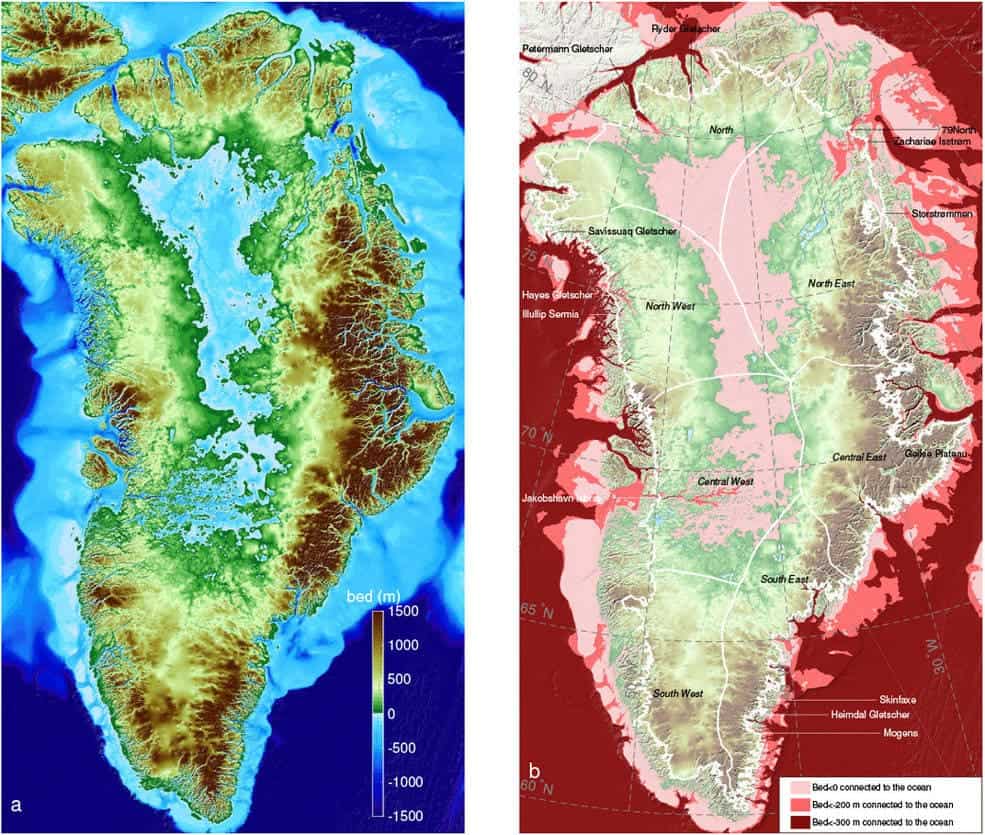We knew climate change was melting Greenland’s glaciers, but new data shows things are even worse than we thought.

It’s never easy to measure the volume of a glacier. Measuring the horizontal extent has gotten somewhat easier thanks to satellite data, but measuring the ice thickness is often much more complicated. This is where bedrock and bathymetric data come in handy. Now, researchers at the University of California at Irvine (UCI), NASA and 30 other institutions have published the most comprehensive, accurate and high-resolution relief maps ever made of Greenland’s bedrock and coastal seafloor. This provides an unprecedented high-quality view of the glaciers but unfortunately, there’s not much good news to go around.
Lead author Mathieu Morlighem of UCI used data from an earlier paper, as well as NASA’s Ocean Melting Greenland (OMG) campaign, said:
“What made OMG unique compared to other campaigns is that they got right into the fjords, as close as possible to the glacier fronts. That’s a big help for bedrock mapping.”
Additionally, the OMG campaign surveyed large sections of the Greenland coast for the first time ever. This comes in handy especially in fjord areas, where there is almost no previous data.
The study not only refines calculations for total volumes of ice but also provides insight into the melting of ice.
The new data shows that two to four times more oceanfront glaciers extend deeper than 600 feet (200 meters) below sea level than earlier maps showed. This is concerning because the top 600 feet of water come from the Arctic and are relatively cold, but after that, relatively warmer water seeps in. This means that more glaciers than expected are exposed to this warmer water, which causes them to melt more rapidly.
As climate change continues to take its toll, that’s really not what you want to hear. Ice covers approximately 80% of Greenland. The 1,710,000 square kilometers (660,000 sq mi) ice sheet is the second largest ice body in the world, after the Antarctic ice sheet. However, many scientists believe that given a 2C temperature rise, all the Greenland ice will melt. If that were to happen, global sea levels would rise 7.2 m (24 ft), from Greenland alone.
Journal Reference: M. Morlighem et al. BedMachine v3: Complete Bed Topography and Ocean Bathymetry Mapping of Greenland From Multibeam Echo Sounding Combined With Mass Conservation. DOI:10.1002/2017GL074954






